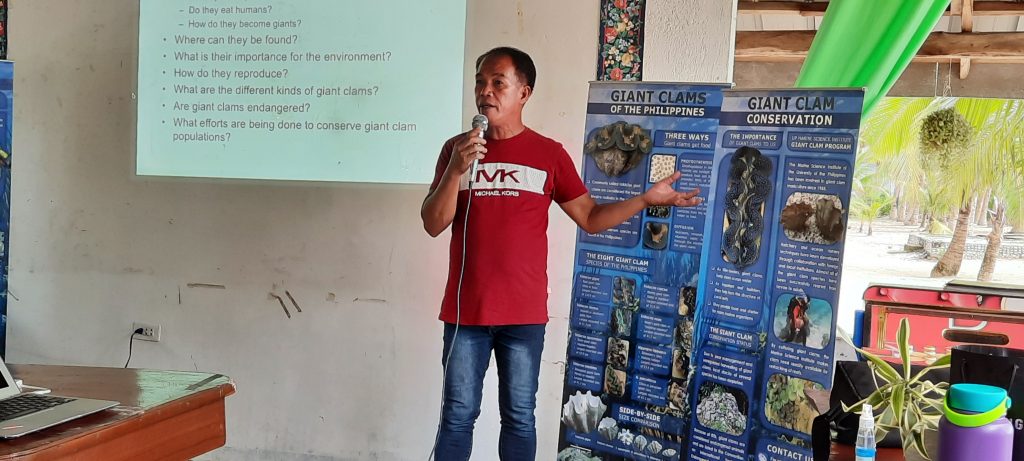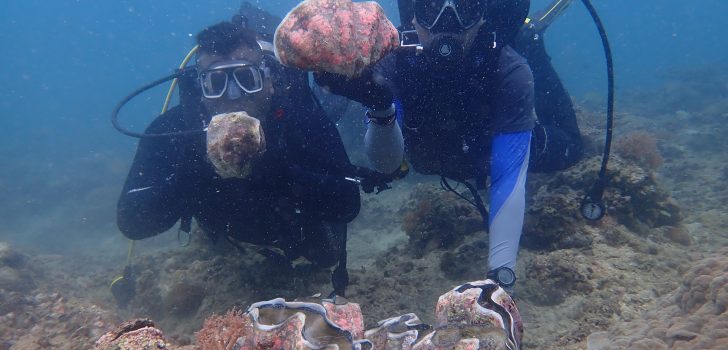 NRM Specialist Ferdie Cruz of PRDP South Luzon and Mr. Niño Patok of Agdangan MLGU helps place the giant clams in Bahurang Silag Marine Protected Area. (Photo: Shea Bitalac, PRDP NPCO NRM Officer)
NRM Specialist Ferdie Cruz of PRDP South Luzon and Mr. Niño Patok of Agdangan MLGU helps place the giant clams in Bahurang Silag Marine Protected Area. (Photo: Shea Bitalac, PRDP NPCO NRM Officer) Agdangan restocks giant clams in PRDP-supported MPAs
Endangered giant clams were placed on the Bahurang Silag and Lawis marine protected areas (MPA) in Agdangan, Quezon as part of the local government unit’s plan to increase the biodiversity inside its municipal water. The Bahurang Silag MPA is one of the recipients of the rehabilitation grant from the Philippine Rural Development Project – Global Environment Facility (PRDP-GEF).
“We are proud that our waters can serve as a suitable habitat for these giant clams. By hosting them here in Bahurang Silag and Lawis, we are taking part in ensuring that the future generations will still see and experience the benefits these giant clams provide,” Agdangan Mayor, Rhadam Aguilar, said.
Seventy-two Tridacna gigas (giant clams) were raised on Bolinao Marine Laboratory (BML) of the Marine Science Institute – University of the Philippines Diliman in Bolinao, Pangasinan before being transported to Agdangan. To ensure that these specimens will acclimatize with their new home, the shallow portions of MPAs were assessed by Julio Curiano Jr., a BML technician.
“The giant clams range from 21-24 cm. This size is considered juvenile and will reach its maturity after four years. It grows up to three meters and can live up to a hundred years,” PRDP CALABARZON Natural Resource Management Officer Elvie Jane Lagan said. She also stated that the clams are situated one meter apart in rows and columns on the two protected areas.
According to a study from https://sharkresearch.rsmas.miami.edu, these giant clams can counter eutrophication, create habitat and affect water flows, and hinder sedimentation hence their presence is indicative of reef health.
As filter-feeders, it also helps clean the ocean water. Likewise, it does not only help form the structure of coral reefs but also provide food and shelter for many marine organisms.
Two other Tridacna species are native to the area. These are T. squamosa with visible scales and T. crocea, a burrowing species and the smallest member of the giant clams.
The PRDP-funded equipment such as guard house, boat, and monitoring tools are provided to protect and monitor the clams.Aside from Lagan, four other divers arranged the clams underwater, installed the markers, and determined the coordinates where the clams were situated. These were Nino Patok and Felipe Villamin from Agdangan MLGU; NRM Officer Shea Bitalac from the National Project Coordination Office; and NRM Specialist Ferdie Cruz from PRDP South Luzon. # (Lawrence Albert Bariring, DA-PRDP CALABARZON RPCO InfoACE Unit Writer)
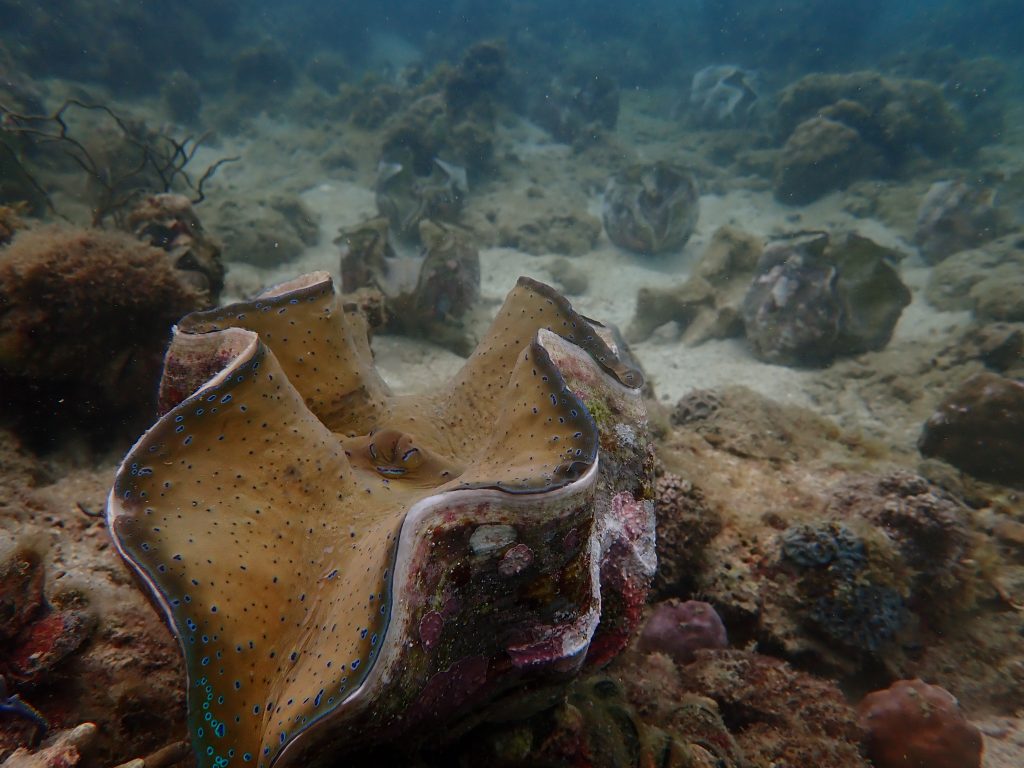
Newly-placed Tridacna gigas in Lawis Reef Marine Protected Area. Prior to the restocking, Bolinao Marine Laboratory staff surveyed the area to ensure the appropriateness of the reefs as new homes for the giant clams. (Photo: Elvie Jane Lagan, PRDP CALABARZON NRM Officer)
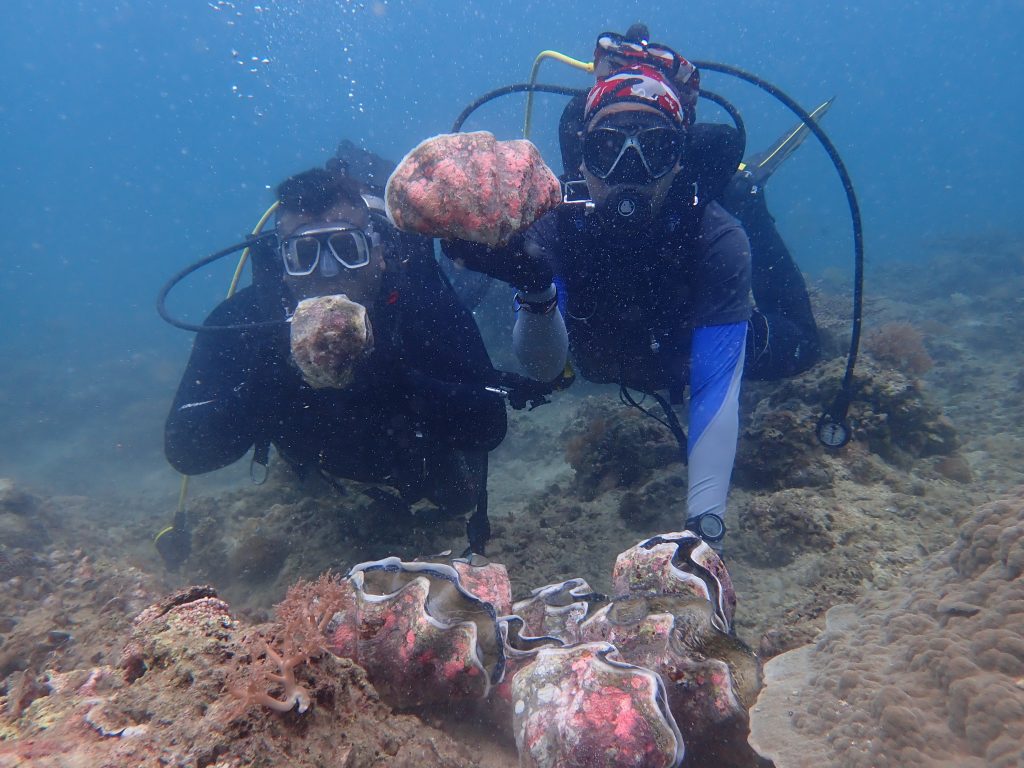
NRM Specialist Ferdie Cruz of PRDP South Luzon and Mr. Niño Patok of Agdangan MLGU helps place the giant clams in Bahurang Silag Marine Protected Area. (Photo: Shea Bitalac, PRDP NPCO NRM Officer)
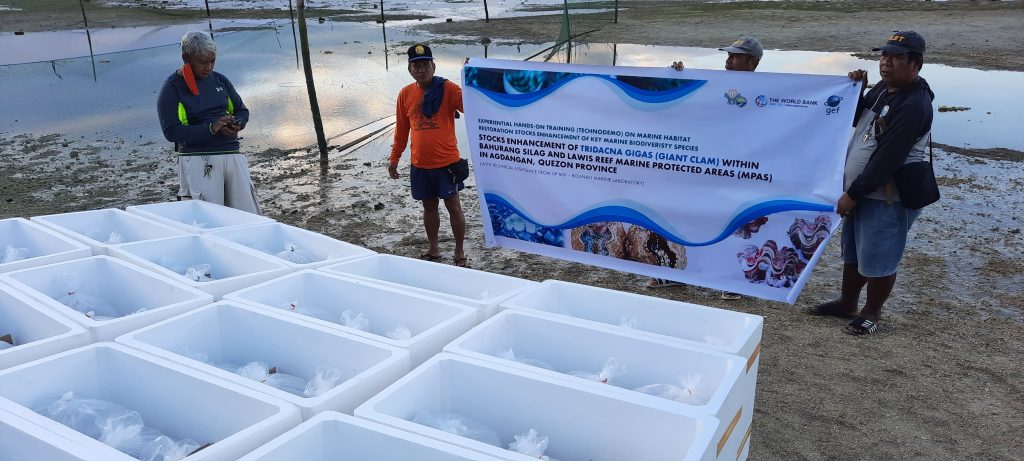
Divers from the local government spread the tarpaulin while showcasing the containers full of giant clams. (Photo: Ferdie Cruz, PRDP South Luzon NRM Specialist)

